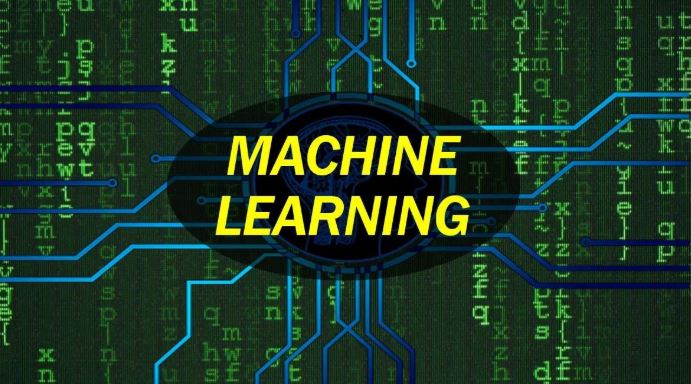The practical application of machine learning (ML) is steadily becoming more popular, across the board. Why? Perhaps due to its ability to process big amounts of data, much faster than any conceivable number of human employees. The adoption of this new technology goes hand-in-hand with the increase in the processing power in computers, including ordinary consumer-grade machines or devices.

As online usage grows, so does cybercrime
As the internet slowly becomes more accessible to everyone all around the world – largely due to the popularization of laptops, smartphones, tablets, and other personal computers, we see an increase in the demand for online services. However, it is not all sunshine and rainbows.
This increase in usage has also led to fraudulent activities, which exploit different loopholes in the system. Who is the most affected? We are talking about banks, online stores, online casinos, etc. The list goes on. One thing is certain – their trading and online activities are also steadily increasing, day by day.
All of these services are facing major problems, particularly with individual users who abuse the system. In some cases, they manage to steal personal identities from other users. Others choose to lie about their own identity. As a result, it is getting tougher for businesses to really authenticate users and their transactions.
Machine learning – a ‘go-to’ tool
Machine learning has become a “go-to” tool for data scientists, especially in solving these kinds of problems. Today, we have entire companies that specialize in developing automated tools, which go through user credentials. They come up with highly elaborate systems, which use machine learning or predictive analytics for automated fraud screening. This model is employed by thousands of businesses worldwide, all in the name of combating fraud.
Before we get into the details of how exactly machine learning is “snuffing out” the foul play, we need to make a small admission. Artificial Intelligence (AI) is not sufficiently developed to successfully manage everything on its own. Due to this fact, it constantly requires human reviews. In addition, there is a lack of large-scale real-world datasets, which are accurate or sensitive enough for commercial use. For example, debit or credit card fraud detection is often severely limited due to privacy concerns.
Anti-fraud machine learning algorithms
We have become more “sensitive” after a series of data breaches, which have since become known to the wider public. Needless to say, the data pertinent to individual transactions, such as cardholder or merchant information are always highly sensitive. This, in itself, is a major stumbling block for professionals, working on data analysis. It makes developing anti-fraud machine learning algorithms almost impossible. While you might recognize it as an important trade-off, it actually hinders new detection methods.
But there is no point in despairing – we have not reached a “standstill” in the battle against fraudsters. At least not yet! In recent years, machine learning and artificial intelligence have really helped to secure a lot of accounts, preventing fraudulent activities online. For example, neural networks have been used as early as 1990 for the detection of fraud, specifically related to bank cards. In 2019 alone,
CyberSource drew insights from more than 68 billion transactions processed worldwide, applying machine learning in the process.
Instead of letting artificial intelligence decide on its own, a lot of businesses are using machine learning to ping their human reviewers when something “fishy” is happening. Over 90% of online fraud detection platforms actively use transaction rules to redirect suspicious activity to human reviewers.
We are only human – we make mistakes
Of course, human review is not a fool-proof method. Even though artificial intelligence may not be perfect, humans also make lots of mistakes. Manual reviews are costly and time-consuming, often leading to a surprisingly high number of false negatives. Why? This is usually caused by low confidence in the automated systems.
As a result, this leads to an increase in the amount of data human reviewers have to “plow” through. As a rule of thumb, the more data there is, the more likely we are to make honest mistakes. What is more, manual reviews simply take too much time. It might be enough to turn the customer away from paying for the service – especially if they made a false positive on the automated system.
Cybercriminals targe payments
Payments are one of the most digitized parts of the financial industry. This alone makes them one of the main targets of fraudsters online. The increase in mobile payments and the fierce competition between different financial institutions to provide the best or the fastest customer experience pushes these companies to slowly relax their verification systems. Due to this trend, banks, online casinos, or transaction handlers, processing your online shopping are switching to machine learning to regulate the process.
A popular platform, Spinia, one of the leading casinos online, has taken a new approach on customer verification. It has tied it to its payment authentication process, making new machine learning algorithms prevent any duplicate transactions. This is a situation, in which a fraudulent user creates a copy of the transaction to charge the company twice, using the same invoice. This problem is not specific to casinos. It happens to Amazon and many other retailers, active on the market today.
Phishing and malware use to steal sensitive data
 Cyber-criminals usually use phishing and a combination of malware in order to steal personal information. Often they succeed in “fooling” the human reviewer into thinking that they are really the titular owners of the account, which they are using online. To fight this phenomenon, many companies have started using data credibility assessment, in order to help to identify missing values in a sequence of transactions.
Cyber-criminals usually use phishing and a combination of malware in order to steal personal information. Often they succeed in “fooling” the human reviewer into thinking that they are really the titular owners of the account, which they are using online. To fight this phenomenon, many companies have started using data credibility assessment, in order to help to identify missing values in a sequence of transactions.
Machine learning can quickly reconcile paper documents or system data, where the human factor has simply failed. It guarantees credibility through finding gaps and verifying personal details, such as past transactions.
Machine learning is heavily dependent on the amount of information “fed” into the system. Otherwise, it cannot predict or analyze the apparent problems. The biggest issue with these fraudulent transactions is that they are a relatively small fraction of the overall business. Some of them still go undetected – the ones that do get spotted are “fed” to the machines. But this means that the volume of information provided is quite small. What are the implications of this?
It takes the system longer to improve its performance. Important to note, there is no one algorithm that is suitable for every type of online activity. Identifying one might take a lot of “trial and error”. It is a time investment, which might be impossible to hurry. Last but not least, machine learning algorithms should be unobtrusive – not to dissuade an honest customer, caught up in false positives.
Conclusion
Machine learning and artificial intelligence have a long way to go – particularly if they are meant to operate without human supervision. However, it does not mean that it has no place in ensuring a thorough verification process. Without a doubt, it is one of the most efficient methods of going through big amounts of data in a good time. Every day, it serves its purpose in detecting fraud, setting a benchmark for customer service.
Video – Artificial Intelligence
_________________________________________________________
Interesting related article: “What is machine learning?”

